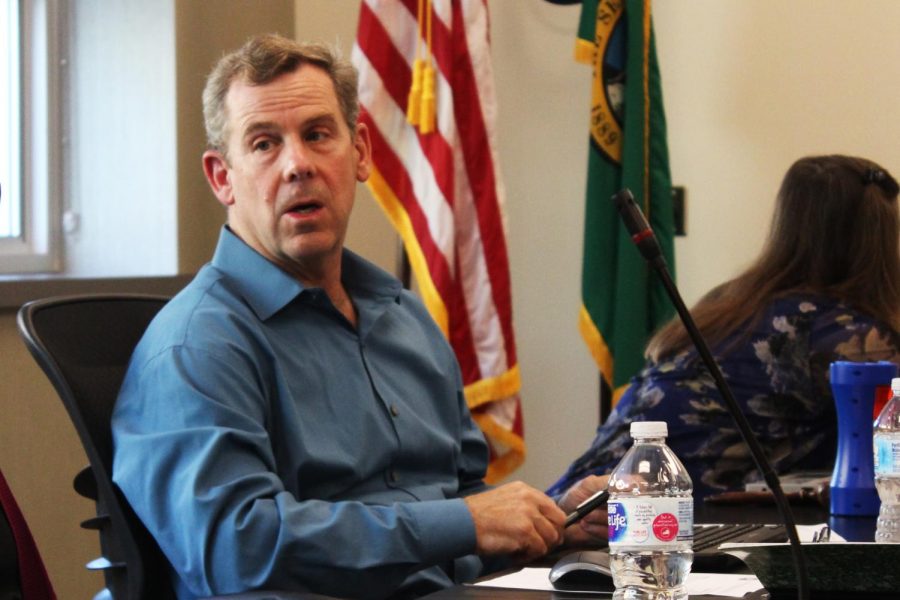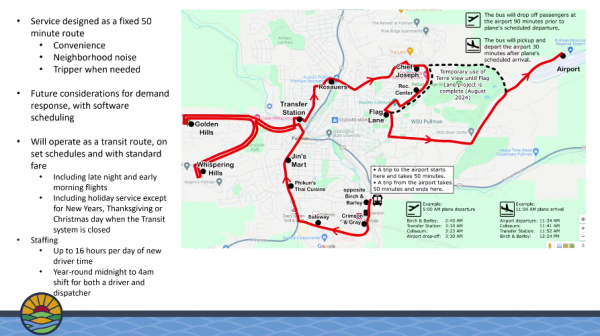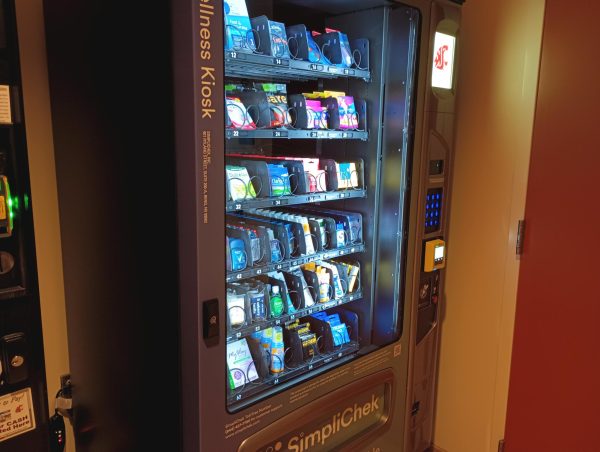Pullman School District enrollment numbers are on the decline
This is the first time in over 10 years student figures have decreased
ASHLEY WILLIAMS | DAILY EVERGREEN FILE
Bob Maxwell, Pullman School District superintendent, addresses concerns from public members about the district’s yearly budget during a meeting in June, 2018.
March 21, 2019
Pullman School District (PSD) student enrollment is projected to decrease for the 2019-2020 school year due to a decline of student Full-Time Enrollment (FTE) in Washington.
Diane Hodge, PSD finance director, said PSD does not know what caused the decline in student full-time enrollment. She said several surrounding school districts are also seeing similar projections.
She said this is the first time in over 10 years student enrollment has decreased in PSD. As a result, the school district will receive less government funds than its budget had anticipated because of the decreased enrollment.
“Our budget is based upon our projected enrollment,” Hodge said. “We want to budget more conservatively than what actual enrollment is.”
Hodge said district budgets help the state allot the amount of money each district needs. Budget finances are used to fund special programs, insurance, school maintenance, teacher salaries, supplies and basic operating costs, she said.
“If we have more students than budgeted, we get more [funds] from the state,” Hodge said.
Revenues and expenditures of the 2019-20 budget will be released to the public July 10, Hodge said. From September to December the state gives the school funds based off the budget, which is then adjusted in January of each year.
“We didn’t anticipate a drop this year,” Hodge said. “Anticipations or projections never meet your reality.”
Shannon Focht, PDS communications coordinator, said Washington changed the FTE qualifications last summer. The 2018-19 school year is the first year to be impacted by the changes, she said.
As of now, Focht said, the average monthly enrollment is 2,793 full-time students. The projected full-time enrollment for next year is 2,770.
She said in previous school years, any student in secondary school who was enrolled in five or more classes qualified as one FTE. Currently, secondary school students must be taking six courses to qualify as one FTE.
“Our headcount is not down significantly,” she said. “But anybody in school taking less than six classes is not full time. That dropped our FTE.”
She said programs such as Running Start impact the total of FTE. If a Running Start student is taking three classes instead of six, they qualify as 0.5 FTE. If a student has an open period in their schedule and are taking five instead of six classes, they qualify as 0.8 FTE.
Hodge said the decrease in state funding will not drastically impact the school district.
“We currently have a healthy fund balance due to the fact that we have anticipated the opening of Kamiak [Elementary School], so this year it won’t affect us,” she said. “We are going to budget more conservatively for enrollment.”






















